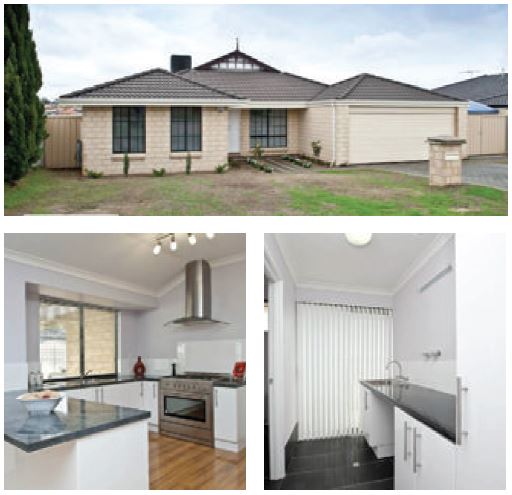 After creating $400,000 equity on a deceased estate they redeveloped, Orsolya and Mick realised the potential for distressed properties and focused their attention on finding them in the market.
After creating $400,000 equity on a deceased estate they redeveloped, Orsolya and Mick realised the potential for distressed properties and focused their attention on finding them in the market.Utilising the information from online investment forums, Orsolya and Mick identified a property waving the red flags of distress in WA. “They were behind in mortgage payments, utility payments, council rates and other things,” Orsolya explains.
After thorough investigation of the property through RP Data to verify age, size, purchase price and valuation, Orsolya began sending targeted letters directly to the owners. “It took about six attempts before they called us back,” says Orsolya. “Perseverance pays off!”
From there, the couple took a unique approach to creating a winning offer for the owners. “The property was only 10 years old, however it was in a bad state,” says Orsolya. “We had the property appraised in its current condition, and looked at all the bills that the owners had to pay. Then we structured the deal in a way that we could ensure all their bills and mortgages were paid out at time of settlement to stop any further action against them, and that they would remain the owners while we renovated and sold the property.”
“Then, the difference between the original value and the renovated price was ours to keep at time of sale settlement to a third party.”

While she agrees there was risk involved in their approach, the modified conditions won them the bid for the property, and she protected their investment by taking out a caveat while they proceeded with the renovation of the property.
Plans for the renovation to take four weeks extended to six when they discovered the extent of neglect on the property. “There was mould growing on the carpets and in the sink cabinets,” says Orsolya. “There was chewing gum stuck to the floor throughout and holes in the walls and doors. A leak in the ensuite had been there for so long that it created a cavity in the piping and all the shower fixtures and pipes had to be replaced.
Wherever we turned there was another issue. There was even a burnt baked dinner left in the oven!”
Orsolya and Mick bought the property far below market value for
$295,000 and spent around $110,000 on renovation costs. With the six-month deadline to sell the property, the couple accepted an offer of
$505,000, which they knew could have been higher if there had been time to hold it on the market longer.
Walking away with a sizeable sum to further their investment portfolio, Orsolya and Mick turned a neglected and distressed property into a home with great potential for future growth.
The risks of buying discounted properties
When you’re searching through the bargain bin for a cut-price deal, there’s a higher potential risk. Before you make an offer on a place that seems too good to be true, look first for the warning signs.
Distressed owners won’t have maintained the home
If they’re unable to service the mortgage, it’s unlikely the owners have had the money to keep the home up to scratch. Beware potential hidden problems that could require extensive repairs and delay occupancy, both of which can stress the budget.
A suburb with too many foreclosures can affect the overall market
Areas showing symptoms of neglect from a high population of distressed homes can take longer to bounce back from their slump in value.
An abundance of bargains can draw an abundance of investors
A suburb with a high density of distressed housing up for quick sale can create an influx of investors and a glut of rentals, with competition pushing rental income down and vacancies up.
Is it really just a poor investment disguised as a bargain?
Snapping up a discount without carrying out the proper inspections and research first can come back to bite you. Structural issues, undesirable location or poor infrastructure can also elicit vendor incentive, so be discerning about nabbing a bargain just because it’s there.
